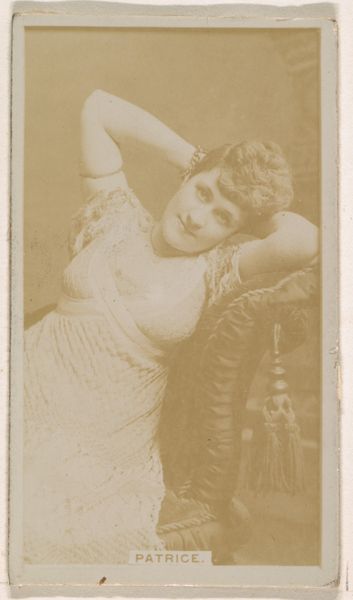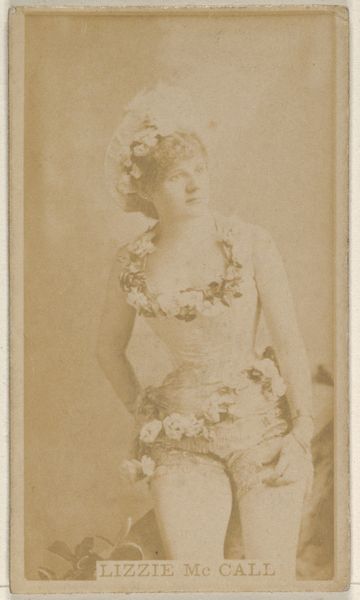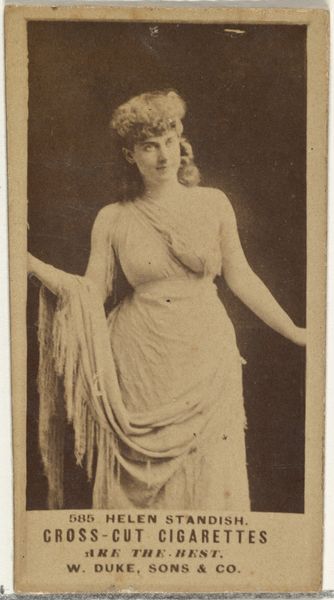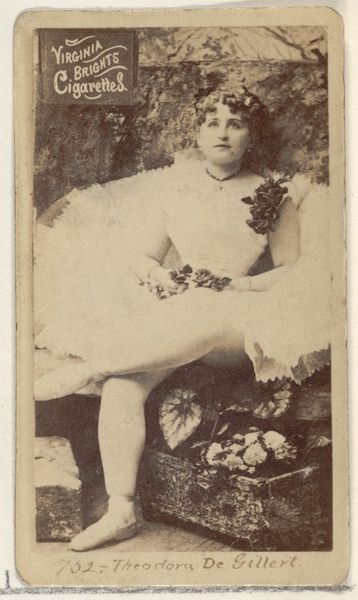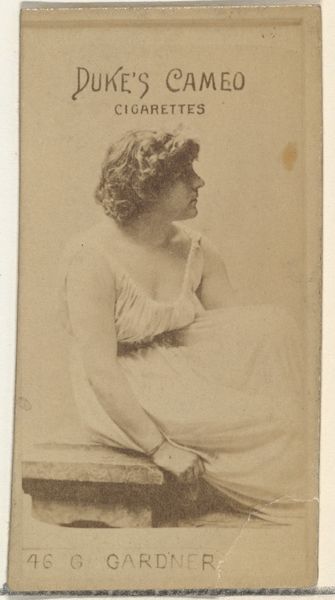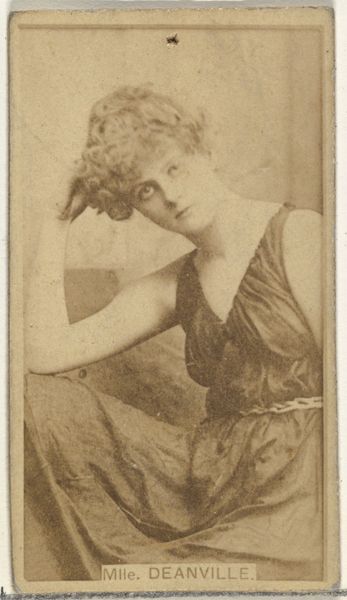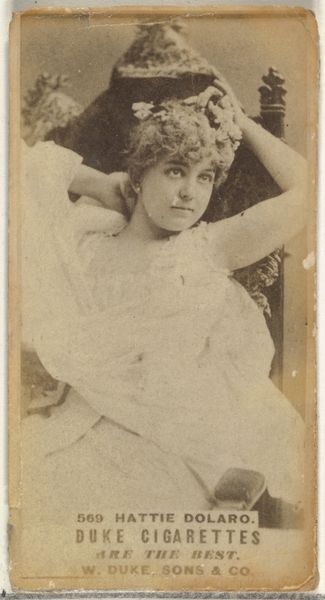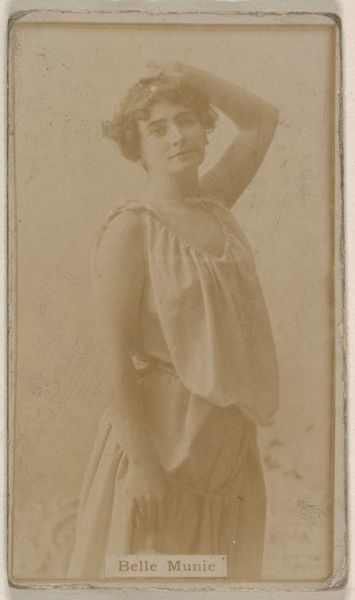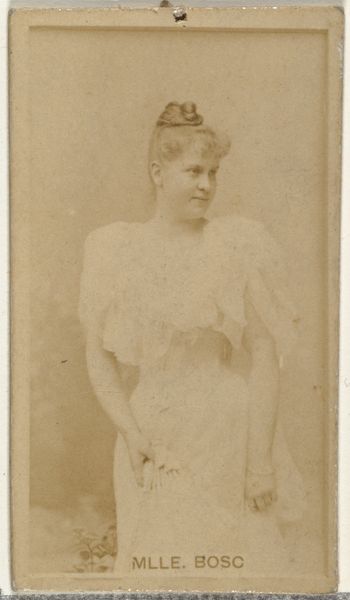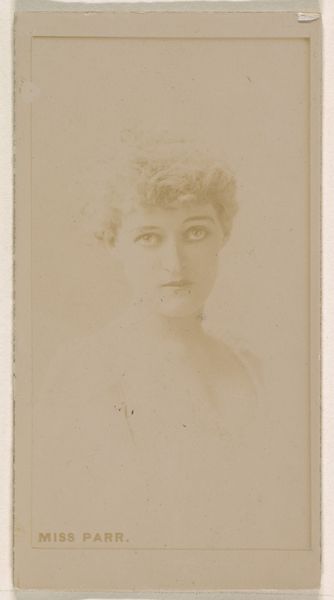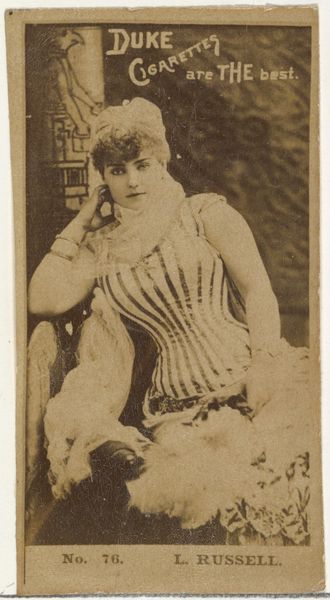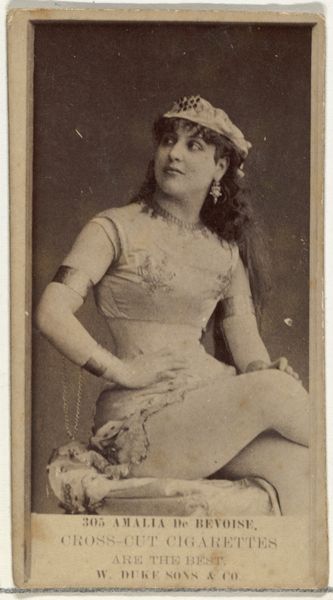
Sallie Randall, from the Actresses series (N245) issued by Kinney Brothers to promote Sweet Caporal Cigarettes 1890
0:00
0:00
print, photography, albumen-print
#
portrait
#
pictorialism
# print
#
photography
#
albumen-print
#
realism
Dimensions: Sheet: 2 1/2 × 1 7/16 in. (6.4 × 3.7 cm)
Copyright: Public Domain
Editor: Here we have a vintage albumen print from 1890 by Kinney Brothers, titled "Sallie Randall, from the Actresses series." It feels both intimate and staged, like a glimpse into another era's construction of femininity. What do you see in this piece, especially considering its origins in tobacco advertising? Curator: What immediately strikes me is the complex interplay of capitalism, representation, and the female gaze. Kinney Brothers, using actresses like Sallie Randall to promote Sweet Caporal Cigarettes, were actively shaping desires and expectations. The seemingly innocent portrait is embedded within a matrix of power. This era saw a rise in consumer culture; what role did celebrity endorsements play in shaping cultural norms around gender? Editor: It's unsettling to think about the image being a sales tool for cigarettes, but also kind of clever. So, it's not just about showing an actress, but using her image to sell an idea of sophistication, or even rebellion through smoking? Curator: Exactly. This image participates in the commodification of femininity and exploits it for economic gain. Think about the power structures at play. Who benefits from this image? How does it reinforce existing gender roles, or perhaps subtly challenge them? How do you think it might have impacted women working in theater and entertainment? Editor: That makes me consider Randall’s agency, or lack thereof. She's presented as an object, but she’s also participating, hopefully with some compensation. So it becomes a complex transaction involving identity, economics, and fame. Curator: Precisely! We need to look beyond the surface. This photograph reveals intersections of gender, class, and consumerism within the late 19th-century social landscape. Advertising like this did normalize practices that had social impacts. It gives us a lens to reflect on who creates these narratives, and what their effect is. Editor: I never thought a cigarette card could open up such a complex conversation. Curator: By engaging with the social history, we start questioning whose story is being told, whose is missing, and who holds the power. I’m always interested in reflecting on power structures, and how those affect individuals.
Comments
No comments
Be the first to comment and join the conversation on the ultimate creative platform.
